I have fitted a lme model in R with a logit transformed response. I have not been able to find a direct command that does the logit transformation so I have done it manually.
logitr<-log(r/1-r)
I then use this as response in my lme model with interaction between two factors and a numerical variable.
model<-lme(logitr<-factor1*factor2*numeric,random=1|random)
Now, R obviously do not know that this model is logit transformed. How can I specify this to R?
I have without luck tried:
update(model, tran="logit")
The reason why I want to specify that the model is logit transformed is because I want to plot the backtransformed results using the function emmip in the emmeans package, showing the trends of the interaction between my variables.
Normally (if I only had factors) I would just use:
update_refgrid_model<-update(ref_grid(model, tran="logit"))
But this approach does not work when I want to use emmip to plot the trends of the interaction between a numerical variable and factors. If I specify:
emmip(update_refgrid_model, factor1~numeric|factor2, cov.reduce = range, type = "response")
then I do not get any trends plotted, only the estimate for the average level on the numerical variable.
So, how can I specify the logit transformation and plot the backtransformed trends of a lme model with factors interacting with numerical variables?

